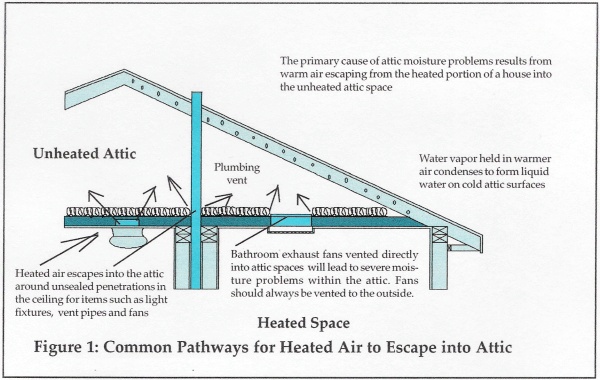In the vast majority of cases the mold growth is caused by condensation.
Attic sheathing wet.
These signs can vary contingent on the catalyst of the problem and are generally worse on north facing or shady sides of roofs.
Moisture or frost on the roofs sheathing.
This occurs when the temperature of the sheathing drops below the dew point creating a thin layer of moisture on the substrate.
Moist or wet insulation.
Mold on attic sheathing.
Water or drip marks scattered on the attic floor.
Does mold on attic sheathing have to be removed.
Mold growth on attic roof sheathing is a common issue in cool climates such as the pacific northwest.
When it was investigated my husband found that the the blown in insulation was blocking the vents the bath exhaust fan hadn t been vented outside the attic and that the sheathing was extremely wet.
Frost itself doesn t do any damage but once it melts things get wet and then damage occurs.
Mold growing on the sheathing in your attic is a serious problem that shouldn t be ignored.
Melting frost can lead to deteriorated roof sheathing mold on the roof sheathing wet insulation and water stains on the ceilings.
When moisture gets into the attic it condenses on the roof sheathing in the form of frost.
Wet sheathing was found in attic area due to lack of venting.
There appears to be some kind of mold up there but there is no access to the attic due to a very low pitched roof.

